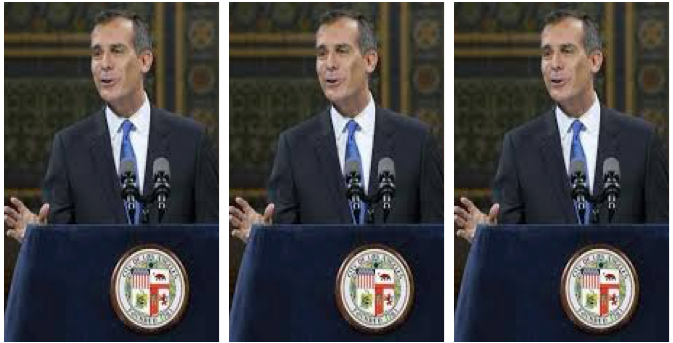CommentsLA WATCHDOG--We are still ploughing through the more than 1,800 pages of budget material that was dropped on us this afternoon, trying to figure out what games the City is playing to finance this year’s budget deficit and how it proposes to close the $245 million budget gap for the upcoming fiscal year beginning July 1, 2017.
However, based on the City’s General Fund Budget Outlook, our Back to Basics City is having a difficult time living within its means as the cumulative budget deficit over the next four years is expected to be almost $300 million despite a $675 million increase in revenues.
For the fiscal year ending June 30, 2022, the last full year of Mayor Eric Garcetti’s second term, the City is projecting a surplus of $10 million, a pittance considering that over his nine years in office, revenues are expected to increase by $1.9 billion, or 42%.
This modest surplus of $10 million is pure fiction. It does reflect the real world.
The Budget Outlook does not take into consideration any new labor contracts for the police, firefighters, and civilian workers. This will cost the City at least $200 million a year more than projected.
The annual required contribution to the City’s two underfunded pension plans are understated as it is unlikely that the return on invested assets will meet the assumed rate of return of 7.5%, an overly optimistic rate per investment professionals such as Warren Buffett of Berkshire Hathaway fame and fortune.
The City may also follow the example of CalPERS (California Public Employees Retirement System), the country’s largest pension plan, by lowering its investment rate assumption. This would add hundreds of millions to the annual required contribution.
The City is also not addressing the deferred maintenance on its streets, sidewalks, parks, trees, building and facilities, and the rest of its deteriorating infrastructure. The deferred maintenance ticket has been estimated to be north of $10 billion a year.
If the City were to have a comprehensive plan to repair and maintain our streets and sidewalks, it would require at least another $100 to $200 million a year.
The City also needs to strengthen the Reserve Fund to an amount equal to 10% of General Fund revenues, a level recommended by the City Administrative Officer. The $100 million Budget Stabilization Fund would also be included in the rainy-day fund calculation. This will require an investment of $250 million over the next five years.
This additional investment in the Reserve Fund will benefit from the issuance of $60 million of Judgment Obligation Bonds, a done deal given the City’s desperate need for cash.
In his State of the City address, Mayor Eric Garcetti said that “our work will not be measured by what we do for ourselves today. It will be remembered for what we leave behind for our children and grandchildren.”
Despite all the fine rhetoric and lofty goals, we are doing a “disservice” to the next generations of Angelenos as we will leave them with a broken system and tens of billions in liabilities that will devour their future as they will pay for the sins of the past.
Back to Basics means that the City of Los Angeles must learn to Live Within Its Means.
(Jack Humphreville writes LA Watchdog for CityWatch. He is the President of the DWP Advocacy Committee and is the Budget and DWP representative for the Greater Wilshire Neighborhood Council. He is a Neighborhood Council Budget Advocate. Jack is affiliated with Recycler Classifieds -- www.recycler.com. He can be reached at: [email protected].)
-cw
Sidebar
Our mission is to promote and facilitate civic engagement and neighborhood empowerment, and to hold area government and its politicians accountable.

 CityWatch Los Angeles
Politics. Perspective. Participation.
CityWatch Los Angeles
Politics. Perspective. Participation.
26
Fri, Dec
















